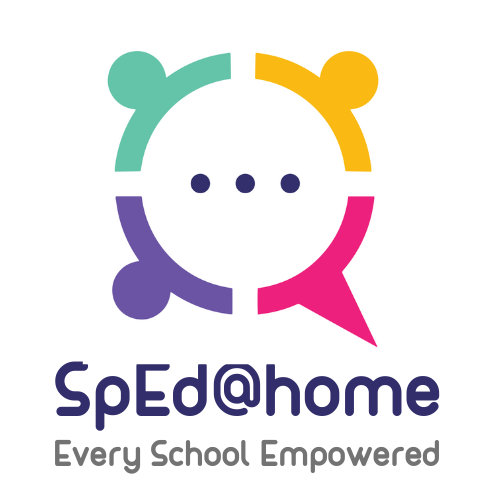Understanding and Managing Hyperactivity in Children
Parenthood brings with it a myriad of challenges, and one common concern parents often face is a child’s inability to sit still or concentrate on one task for an extended period. This restlessness can be attributed to various factors, but when it becomes a persistent issue, it might be a sign of a more significant problem – Attention Deficit Hyperactivity Disorder (ADHD). In this article, we will discuss how to identify the problem, assess it, and explore possible solutions for parents whose child does not sit at one place due to hyperactivity, possibly indicating ADHD.
Identifying
Observation and Pattern Recognition: The first step in addressing hyperactivity in a child is to observe and recognize any patterns in their behavior. Hyperactivity often manifests as excessive fidgeting, restlessness, difficulty staying seated, and an inability to concentrate.
Consulting a Professional: If the hyperactivity is persistent and disruptive to the child’s daily life, it is essential to consult a healthcare professional, such as a pediatrician or child psychologist. They can provide a comprehensive evaluation to determine if the child’s behavior is indicative of ADHD.
Assessing
Diagnostic Criteria: ADHD is a neurodevelopmental disorder characterized by symptoms such as inattentiveness, hyperactivity, and impulsivity. To make a diagnosis, healthcare professionals typically refer to diagnostic criteria laid out in the Diagnostic and Statistical Manual of Mental Disorders (DSM-5). The child’s symptoms must persist for at least six months and significantly impact their daily functioning.
Behavioral Assessments: Professionals may also use behavior rating scales to assess the severity of the child’s symptoms. These assessments often involve input from parents, teachers, and other caregivers to gain a holistic perspective on the child’s behavior.
Psychological Testing: In some cases, psychological testing may be recommended to rule out other conditions that can mimic ADHD symptoms, such as anxiety or learning disabilities.
Solutions for Managing Hyperactivity in Children
Behavioral Interventions: For many children with ADHD or hyperactivity, behavioral interventions can be highly effective. These may include behavioral therapy, which helps children learn to manage their impulses, develop organizational skills, and improve their social interactions.
Parental Education: Parents can benefit from education and training on how to manage a child with ADHD effectively. This includes learning strategies for creating routines, setting clear expectations, and using positive reinforcement to encourage appropriate behavior.
School Support: Collaboration with teachers and the child’s school is crucial. An Individualized Education Plan (IEP) or a 504 Plan can be developed to provide specific accommodations and support for the child’s needs in an educational setting.
Diet and Exercise: While not a direct treatment for ADHD, a healthy diet and regular exercise can play a supportive role in managing hyperactivity. Encouraging children to engage in physical activities and maintaining a balanced diet may help alleviate some symptoms.
Mindfulness and Relaxation Techniques: Teaching children relaxation techniques, such as deep breathing exercises and mindfulness, can help them better manage their hyperactivity. These techniques can be used in conjunction with other therapies to improve focus and self-control.
Is it ADHD?
When a child’s inability to sit still and concentrate becomes a pervasive issue, it may be a sign of ADHD or hyperactivity. Identifying the problem, assessing it properly, and seeking suitable solutions are crucial for helping the child and the family cope with these challenges.
Parents should remember that each child is unique, and there is no one-size-fits-all solution for managing hyperactivity or ADHD. It’s essential to work closely with healthcare professionals, educators, and support networks to develop a tailored approach to support the child’s specific needs.
While ADHD can present significant challenges, it’s also important to recognize the strengths and talents that often accompany the condition. With the right support and strategies in place, children with ADHD can thrive and reach their full potential, demonstrating that hyperactivity is just one facet of their vibrant and unique personalities.
In a world filled with distractions and constant stimulation, children diagnosed with Attention Deficit/Hyperactivity Disorder (ADHD) often face unique challenges in maintaining focus, regulating their emotions, and managing their energy levels. While traditional approaches to treatment include medication and therapy, an emerging complementary practice is gaining recognition for its positive impact on children with ADHD: yoga. This ancient discipline offers a holistic approach to address the physical, mental, and emotional needs of children with ADHD, providing them with valuable tools for self-regulation and enhanced well-being. In this article, we will explore the profound benefits of yoga for children with ADHD and highlight why it deserves a place in their treatment plans.
Enhances Mind-Body Connection
Yoga involves a series of physical postures (asanas) and controlled breathing exercises (pranayama) that promote a deep connection between the mind and body. Children with ADHD often struggle with self-awareness and impulse control. Through regular yoga practice, they can learn to focus their attention, synchronize breath with movement, and develop a heightened sense of body awareness. This increased mind-body connection fosters self-regulation skills, allowing children to better manage their impulses and reactions.
Improves Focus and Concentration
One of the core symptoms of ADHD is difficulty sustaining attention. Yoga offers a range of techniques that can significantly improve a child’s ability to concentrate. The practice involves maintaining specific poses, focusing on the breath, and engaging in mindful movements. These activities enhance the child’s ability to remain present and attentive, positively impacting their academic performance and overall productivity.
Reduces Anxiety and Stress
Children with ADHD often experience higher levels of anxiety and stress due to their challenges with organization, time management, and social interactions. Yoga provides a safe and non-competitive environment for them to release tension and anxiety. The deep breathing exercises and gentle movements of yoga stimulate the parasympathetic nervous system, triggering the relaxation response. As a result, children experience reduced stress levels, improved emotional well-being, and enhanced resilience in the face of everyday challenges.
Cultivates Emotional Regulation
Emotional dysregulation is a common feature of ADHD, with children experiencing intense emotions and difficulty managing them appropriately. Yoga encourages mindfulness, self-reflection, and self-acceptance, enabling children to better understand and regulate their emotions. By learning techniques such as deep breathing, visualization, and meditation, children with ADHD develop emotional resilience and gain tools to calm themselves during moments of distress or hyperactivity.
Boosts Self-Esteem and Confidence
Children with ADHD often face feelings of frustration and low self-esteem due to their struggles in various aspects of life. Yoga provides a supportive environment where children can succeed and witness their progress firsthand. As they master new poses, improve their balance, and observe their increased focus and self-control, their confidence grows. Yoga also fosters a sense of belonging and acceptance, as children learn to appreciate their unique abilities and respect the individuality of others in the class.
The practice of yoga offers numerous benefits for children with ADHD, addressing their physical, mental, and emotional needs in a holistic manner. By cultivating mind-body awareness, improving focus and concentration, reducing anxiety and stress, fostering emotional regulation, and boosting self-esteem, yoga empowers children with ADHD to thrive in various aspects of their lives. It is essential to include yoga as part of a comprehensive treatment plan, alongside medication and therapy, to provide children with a well-rounded approach to managing their ADHD symptoms and promoting their overall well-being.
Yoga can be a beneficial practice for children with autism spectrum disorder (ASD), attention deficit hyperactivity disorder (ADHD), and learning disabilities. It can help improve their physical coordination, body awareness, self-regulation skills, and overall well-being. Here are some general guidelines and specific yoga techniques that may be helpful:
Consult with professionals
Before starting any yoga program, it’s important to consult with healthcare professionals, such as occupational therapists or behavioral therapists, who are familiar with the specific needs of children with ASD, ADHD, and learning disabilities. They can provide guidance and adapt the yoga practice to suit individual needs.
Sensory-friendly environment
Create a calm and sensory-friendly environment for yoga practice. Minimize distractions, use soft lighting, and provide a designated area with minimal sensory input. Some children may benefit from using props like yoga mats, bolsters, or weighted blankets for added comfort.
Breathing exercises
Teach children simple breathing exercises to help them calm their minds and bodies. Deep breathing techniques, such as belly breathing or “balloon breath,” can promote relaxation and self-regulation. Encourage slow, deep breaths, and teach them to visualize filling up their bellies with air like a balloon.
Gentle stretches
Introduce gentle stretches to improve flexibility and body awareness. Use simple yoga poses like Child’s Pose, Cat-Cow, Mountain Pose, and Tree Pose. Emphasize slow and controlled movements, focusing on the sensations in different parts of the body.
Yoga games and activities
Incorporate fun and interactive yoga games and activities to engage children with ASD, ADHD, and learning disabilities. For example, you can play “Yogi Says” (similar to Simon Says), where they mimic different yoga poses or movements. Use visual aids or picture cards to help them follow instructions and sequences.
Mindfulness exercises
Introduce mindfulness exercises to help children develop present-moment awareness and focus. This can include guided visualization, body scans, or mindful walking. Encourage them to notice their thoughts, feelings, and sensations without judgment.
Partner poses
Incorporate partner poses to encourage social interaction and cooperation. For example, practice “Tree Pose Buddies” where children stand side by side, holding hands, and supporting each other’s balance.
Relaxation and meditation
Teach relaxation techniques like guided imagery or progressive muscle relaxation to help children with ASD, ADHD, and learning disabilities unwind and reduce anxiety. Guided meditation recordings or soft background music can also aid in relaxation.
Remember, every child is unique, so it’s essential to tailor the yoga practice to their individual needs and abilities. Regular practice, consistency, and patience are key. It’s always best to work with professionals experienced in working with special needs children to ensure a safe and effective yoga experience.
Reading is an essential skill that opens the doors to knowledge, imagination, and personal growth. However, for some individuals, reading can be a challenging and frustrating task. Fortunately, occupational therapy (OT) offers a unique approach to address reading difficulties by improving underlying cognitive, sensory, and motor skills. In this blog post, we will explore how occupational therapy interventions can enhance reading abilities and empower individuals to become confident and proficient readers.
Understanding Reading Challenges
Reading difficulties can manifest in various forms, including difficulties with decoding, fluency, comprehension, and attention. These challenges may arise due to underlying issues such as visual processing deficits, sensory integration difficulties, motor coordination problems, or attention deficits. Occupational therapists are trained to assess and address these underlying issues, recognizing that reading involves the coordinated use of multiple skills.
Holistic Approach of Occupational Therapy
Occupational therapy takes a holistic approach to improve reading abilities. It focuses not only on the specific challenges related to reading but also on the overall development and functioning of individuals. Occupational therapists consider the unique needs and strengths of each individual and develop tailored intervention plans to address their specific difficulties. By targeting the underlying issues that contribute to reading challenges, occupational therapy can have a positive and lasting impact on reading abilities.
Sensory Integration and Visual Processing
Sensory integration plays a crucial role in reading. Occupational therapists use sensory integration techniques to enhance an individual’s ability to process and interpret information from their environment. For example, a child with sensory integration difficulties may struggle to filter out irrelevant sensory input while reading. Through occupational therapy, the child can engage in activities that promote sensory processing skills, such as sensory-based play or structured movement exercises. Additionally, occupational therapists also work on improving visual processing skills, including visual tracking, focusing, and visual memory, which are essential for efficient reading.
Motor Coordination and Fine Motor Skills
Reading requires precise and coordinated movements, both gross motor and fine motor. Occupational therapy can help individuals develop their motor coordination and fine motor skills, ensuring smooth eye movements, tracking, and efficient use of hands. Activities such as writing, drawing, and manipulating objects strengthen the fine motor skills needed for accurate letter formation, page turning, and using tools like pens and highlighters. By enhancing motor skills, occupational therapy promotes better engagement with reading materials.
Attention and Executive Functioning
Sustaining attention and managing executive functions are crucial for successful reading. Occupational therapists employ strategies to improve attention skills, such as providing structured routines, incorporating visual supports, and using sensory tools like fidget toys to enhance focus. Additionally, they work on strengthening executive functions, including planning, organizing, and self-regulation, which are essential for managing reading tasks effectively.
Environmental Adaptations
Occupational therapists also recognize the impact of environmental factors on reading abilities. They collaborate with educators and parents to create supportive environments that optimize learning. This may involve making adaptations to lighting, seating, or organization systems. By creating an environment that minimizes distractions and maximizes comfort, individuals can better focus on reading tasks.
Occupational therapy offers a comprehensive and individualized approach to improve reading abilities. By addressing the underlying cognitive, sensory, and motor skills, occupational therapists empower individuals to overcome reading challenges and develop a lifelong love for reading. Through their expertise and interventions, occupational therapists pave the way for enhanced reading skills, increased confidence, and improved overall academic success.
Handwriting is a fundamental skill that plays a vital role in education, communication, and daily life. For some individuals, however, difficulties in handwriting can impede their academic progress and self-confidence. This is where occupational therapy (OT) steps in, offering targeted interventions to improve handwriting and unlock the potential of fine motor skills.
Understanding the Importance of Handwriting
Handwriting serves as a crucial foundation for learning, aiding in cognitive development, memory retention, and the expression of ideas. It also enhances fine motor skills, hand-eye coordination, and spatial awareness. Consequently, occupational therapists recognize the significance of addressing handwriting difficulties to ensure individuals can achieve their full potential.
Assessing Handwriting Challenges
Occupational therapists begin by conducting comprehensive assessments to identify the specific challenges faced by individuals in their handwriting. These assessments evaluate areas such as letter formation, spacing, sizing, line alignment, and overall legibility. By understanding the underlying factors causing difficulties, therapists can tailor interventions to address each individual’s unique needs.
Book an Occupational Therapy Assessment today!
Developing Fine Motor Skills
Occupational therapy interventions aim to improve handwriting by focusing on enhancing fine motor skills. These skills include hand and finger strength, dexterity, coordination, and control. Therapists may employ various activities such as finger exercises, grasping objects of different sizes and textures, and using tools like tweezers or clothespins. These activities target the muscles and movements necessary for efficient handwriting, promoting better pencil control, and letter formation.
Sensory Integration
Sensory integration techniques are an integral part of occupational therapy for handwriting improvement. Sensory input, such as tactile, proprioceptive, and visual stimuli, plays a crucial role in handwriting. Occupational therapists incorporate sensory-rich activities into therapy sessions to enhance sensory processing and integration, helping individuals better perceive and respond to sensory information. This, in turn, facilitates improved motor skills and handwriting performance.
Environmental Adaptations and Assistive Technology
Occupational therapists also explore environmental adaptations and assistive technology solutions to support individuals with significant handwriting challenges. These may include using adaptive writing tools, modified paper, and alternative positioning strategies. By optimizing the physical environment and providing appropriate assistive devices, therapists empower individuals to overcome obstacles and succeed in written communication.
Occupational therapy serves as a valuable resource for individuals struggling with handwriting difficulties. By addressing fine motor skill development, sensory integration, and utilizing environmental adaptations, occupational therapists help individuals unlock their potential and improve their handwriting skills. This not only enhances academic performance but also fosters self-confidence and independence in daily life.
Online occupational therapy, also known as teletherapy or virtual therapy, has emerged as a valuable and effective approach to providing therapy services in the digital age. With advancements in technology and increased accessibility to the internet, occupational therapists are now able to connect with their individuals remotely and deliver quality care through online platforms. This innovative method of therapy has revolutionized the field of occupational therapy, opening up new possibilities and reaching individuals who may have otherwise faced barriers to receiving treatment.
Online occupational therapy encompasses a range of interventions and assessments that are tailored to meet the unique needs of each individual. The process typically begins with an initial evaluation, where the therapist and individual establish rapport and discuss the individual’s goals, challenges, and desired outcomes. This evaluation may involve the use of video conferencing, questionnaires, and other digital tools to gather relevant information about the individual’s condition and functional abilities.
Once the evaluation is complete, the therapist and individual collaborate to develop an individualized treatment plan. This plan may include various therapeutic activities, exercises, adaptive strategies, and assistive technologies aimed at enhancing the individual’s independence, function, and overall well-being. The therapist guides the individual through these interventions using video conferencing platforms, providing real-time instruction, feedback, and support.
One of the significant advantages of online occupational therapy is its flexibility and convenience. individuals can receive therapy sessions from the comfort of their own homes, eliminating the need for travel and reducing associated costs and time constraints. This is particularly beneficial for individuals with mobility issues, transportation limitations, or those living in remote areas. Moreover, online therapy allows for increased scheduling options, accommodating busy lifestyles and enabling therapy to fit into the individual’s routine more seamlessly.
During the therapy sessions, the therapist utilizes various digital tools to facilitate engagement and interaction. These may include virtual whiteboards, educational videos, interactive games, and electronic documents for sharing resources and assignments. Additionally, therapists can utilize screen sharing capabilities to demonstrate specific techniques or guide individuals through exercises in real-time. The therapist and individual can communicate through video, audio, and text chat, fostering effective communication and ensuring that the therapy goals are met.
Despite the physical distance, the therapeutic relationship between the occupational therapist and the individual remains central to the success of online therapy. Therapists employ empathy, active listening, and effective communication skills to establish a strong connection with their individuals. They adapt their approach to suit the virtual environment, ensuring that the individual feels supported, heard, and understood.
Privacy and confidentiality are paramount in online occupational therapy. Therapists adhere to strict privacy policies and use secure and encrypted platforms to protect individual information. They also obtain informed consent from individuals and their caregivers regarding the use of technology and the limitations associated with online therapy.
As with traditional in-person therapy, online occupational therapy sessions are typically followed by periodic evaluations to assess progress, modify treatment plans, and set new goals. This continuous feedback loop ensures that therapy remains dynamic and responsive to the individual’s evolving needs.
In conclusion, online occupational therapy has transformed the delivery of therapy services by leveraging technology and digital platforms. It provides flexibility, convenience, and access to therapy for individuals who may face geographical, logistical, or physical barriers. Through video conferencing, digital tools, and effective communication, occupational therapists are able to connect with individuals, deliver interventions, and achieve meaningful outcomes. As technology continues to advance, online occupational therapy is likely to play an increasingly important role in promoting independence, function, and well-being for individuals around the world.
Education therapy, also known as educational therapy or learning therapy, is a specialized form of intervention that focuses on addressing and supporting children with learning difficulties or disabilities. Here are some benefits of education therapy for children.
Take an Educational Assessment today
Individualized Approach
Education therapy takes into account the unique learning needs and challenges of each child. It offers a tailored, one-on-one approach, allowing the therapist to design personalized strategies and interventions that suit the child’s specific learning style.
Targeted Skill Development
Education therapy focuses on developing and improving specific academic, cognitive, and executive functioning skills. It helps children enhance areas such as reading, writing, math, attention, memory, problem-solving, organization, and time management, among others.
Remediation of Learning Difficulties
Education therapy aims to address the root causes of learning difficulties rather than simply providing short-term solutions. By identifying and targeting underlying learning challenges, the therapy helps children overcome their difficulties and build a strong foundation for future academic success.
Boosts Confidence and Self-esteem
Children with learning difficulties often struggle with their self-esteem and may feel discouraged or frustrated by their academic challenges. Education therapy provides a supportive and nurturing environment where children can experience success and progress at their own pace. As they develop new skills and witness their own growth, their confidence and self-esteem improve.
Enhances Learning Strategies
Education therapy equips children with effective learning strategies and study skills that can be applied across various academic tasks. Children learn how to break down complex tasks, manage their time, organize information, and utilize strategies tailored to their individual strengths and weaknesses. These skills empower them to become more independent learners.
Emotional and Behavioral Support
Education therapy recognizes that emotional and behavioral factors can impact a child’s learning. Therapists work closely with children to address any emotional barriers that may be hindering their academic progress. By providing emotional support, building resilience, and teaching coping mechanisms, education therapy helps children manage stress and anxiety related to their academic challenges.
Collaboration with Other Professionals
Education therapists often collaborate with teachers, parents, and other professionals involved in a child’s education. This collaboration ensures a holistic approach, where everyone works together to support the child’s learning and development. By fostering open communication and sharing insights, education therapy helps create a comprehensive support system for the child.
Long-term Academic Success
Through its targeted interventions and skill development, education therapy equips children with the tools they need to succeed academically in the long term. By addressing learning difficulties early on and providing ongoing support, children are better prepared to overcome challenges, meet their academic goals, and maximize their potential.
Overall, education therapy offers numerous benefits for children with learning difficulties. By providing personalized support, remediation of challenges, and empowering strategies, it helps children build a solid educational foundation and fosters their overall growth and development.
Autism and Dance Therapy
Autism, also known as Autism Spectrum Disorder (ASD), is a neurodevelopmental disorder that affects social interaction, communication, behavior, and sensory processing. It is one of the fastest-growing developmental disorders in the country.
How Dance Therapy Can Help Manage Symptoms:
While there is no cure for autism, various therapies can help manage its symptoms. One such therapy is dance therapy, which involves using movement and music to enhance physical, emotional, cognitive, and social well-being. Dance therapy is a holistic approach that can benefit people of all ages and abilities, including those with autism.
One of the key benefits of dance therapy for people with autism is that it can improve social skills. Many people with autism struggle with social interaction, but dance therapy can help them learn how to communicate and connect with others through movement. Dance therapy can also help improve motor skills, coordination, and balance, which are often delayed in people with autism.
Another benefit of dance therapy is that it can help reduce anxiety and stress. People with autism often experience sensory overload, which can lead to anxiety and stress. Dance therapy can provide a calming and soothing environment that helps people with autism regulate their emotions and reduce anxiety.
Additionally, dance therapy can improve self-expression and creativity. People with autism often struggle with communication, but dance therapy can help them express themselves through movement and music. Dance therapy can also foster creativity and imagination, which can be particularly helpful for people with autism who may have a limited range of interests and activities.
Benefits of Dance Therapy:
- Improves social skills
- Enhances motor skills, coordination, and balance
- Reduces anxiety and stress
- Improves self-expression and creativity
In conclusion, dance therapy is a promising therapy for people with autism. It can help manage the symptoms of autism by improving social skills, motor skills, and reducing anxiety and stress. Dance therapy is also a fun and creative way for people with autism to express themselves and connect with others. If you or someone you know has autism, consider exploring dance therapy as a potential therapy option.
Autism spectrum disorder (ASD) is a developmental disorder that affects communication, social interaction, and behavior. The symptoms of autism can vary widely, but they typically appear in early childhood and can persist throughout adulthood. While there is no known cure for autism, there are various therapies and interventions that can help manage the symptoms and improve the quality of life for individuals with autism. One such therapy is music therapy.
What is Music Therapy?
Music therapy is a form of therapy that uses music to address physical, emotional, cognitive, and social needs. It is a non-invasive, enjoyable, and effective therapy that can be tailored to the individual needs of each person. Music therapy can be used to improve communication skills, reduce anxiety, enhance motor skills, and promote social interaction.
How Can Music Therapy Help Manage the Symptoms of Autism?
Music therapy has been shown to be effective in helping individuals with autism manage their symptoms in a number of ways:
Improving communication skills: Music therapy can help improve communication skills in individuals with autism by using music to teach language and social skills. Singing, playing instruments, and listening to music can all be used to promote language development and enhance communication skills.
Reducing anxiety: Music therapy can help reduce anxiety and promote relaxation in individuals with autism. The calming effect of music can help reduce stress and anxiety and promote a sense of calmness and relaxation.
Enhancing motor skills: Music therapy can help improve motor skills in individuals with autism by using rhythm and movement to promote coordination and body awareness. Playing instruments, dancing, and singing can all be used to promote motor development and enhance body awareness.
Promoting social interaction: Music therapy can help promote social interaction in individuals with autism by using music to encourage social engagement and interaction. Group music therapy sessions can provide opportunities for individuals with autism to interact with others and develop social skills.
Music therapy has shown to be a promising therapy option for individuals with autism. By incorporating music into individualized treatment plans, individuals with autism can benefit from improved communication skills, reduced anxiety, enhanced motor skills, and increased social interaction. Music therapy is a non-invasive, enjoyable, and effective therapy that can be tailored to the individual needs of each person with autism. If you or a loved one is affected by autism, consider exploring the use of music therapy as a potential treatment option.
Autism spectrum disorder (ASD) is described as a neurodevelopmental condition that leads to impaired social communication skills, repetitive behavioral patterns, and obsessive areas of interests. ASD is usually diagnosed as early as 2 years of age but many children grow well into adulthood without having being officially diagnosed.
Early diagnosis and timely intervention can significantly help manage autism in children. Occupational Therapy can play a great part in achieving this outcome.
What Is Occupational Therapy?
Occupational Therapy is a holistic therapy which treats children who may be healing from injuries, disabilities, and other developmental disorders like Autism. Typically, Occupational Therapists work towards development, recovery, and maintenance of the child’s ability to carry out daily activities and social interaction.
Occupational Therapy begins with the therapist sitting down with the child and their parents to be able to better understand their needs. This is followed by a thorough assessment of the child’s emotional, sensory, and cognitive needs to help develop achievable goals through a comprehensible treatment plan. The Occupational Therapist then works one-on-one with the child to ensure consistent progress.
Occupational Therapy and ASD
Occupational Therapists monitor children with autism and aim to improve their ability to regulate their emotions so they can be part of social interactions, seamlessly. Occupational Therapists evaluate the following skills to determine whether a child is on the Autism spectrum.
- Social interaction: Interaction between peers.
- Communication: Non-verbal communication like body language.
- Cognitive: stamina, attention span.
- Sensory: response to stimuli and sensory defensiveness.
- Motor: Balance, posture, handling of small objects.
Once the Occupational Therapist has assessed the requirements of the child, they design a customized therapy plan to ensure the child can improve in areas they need the most. This helps the child to manage symptoms and grow in a safe and understanding environment that promotes their need to thrive.









